Inner Join
Introduction
An INNER JOIN is a type of join operation that retrieves all rows from both participating tables where the key record of one table matches the key record of another table. This type of join relies on a comparison operator to match rows from the participating tables based on a common field or column in both tables. From the Pipeline Inner Join feature, you will understand how to construct a pipeline that merges data from two tables based on common attributes. The inner join operation selects only the rows that have matching values in both tables.
Prerequisites :
The prerequisites for setting up an inner join pipeline typically include :
-
Access to the AIV application with appropriate permissions.
-
Availability of datasets or tables to be joined.
-
Understanding of the common field or column on which the join operation will be performed.
-
Knowledge of the inner join concept and its application in combining data from multiple sources.
-
Familiarity with the AIV interface for creating and configuring pipelines.
-
Working parameter datasets, particularly if dynamic filtering or conditions are involved.
-
Clear understanding of the desired output and how the joined data will be utilized downstream.
These prerequisites ensure a smooth setup and execution of the inner join pipeline within the AIV environment.
Objective
Follow steps to create Inner-Join Pipeline in AIV :
-
Download Pipeline.zip File: Access the link provided to download the Pipeline.zip file to your local system. Download Pipeline.zip file from the link given. Pipeline.zip
-
Extract the ZIP File : Once the download is complete, extract the contents of the Pipeline.zip file to a folder on your computer.
-
Access AIV Platform : Log in to the AIV platform using your credentials.
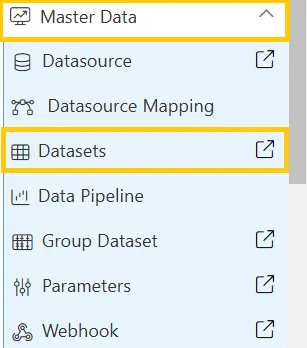
Navigate to the Dataset section and click on “Create Pipeline” located in the bottom menu bar, as illustrated in the figure below.
![]()
After clicking, you will see a blank window for creating a pipeline, as depicted in the image below.
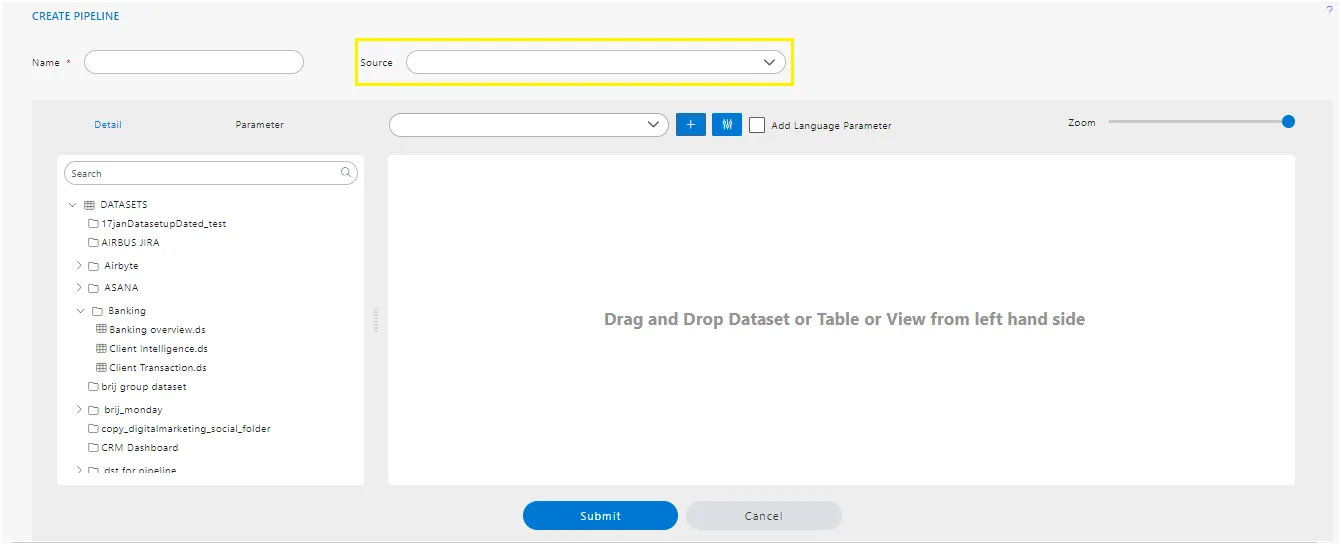
Enter the Following detail in the Pipeline dialog box:
Name: Inner Join
Source: Test-datasetmapping-datasource-users_role (select as per your requirement)
Expand tables from the left side table view, As shown in the figure below.
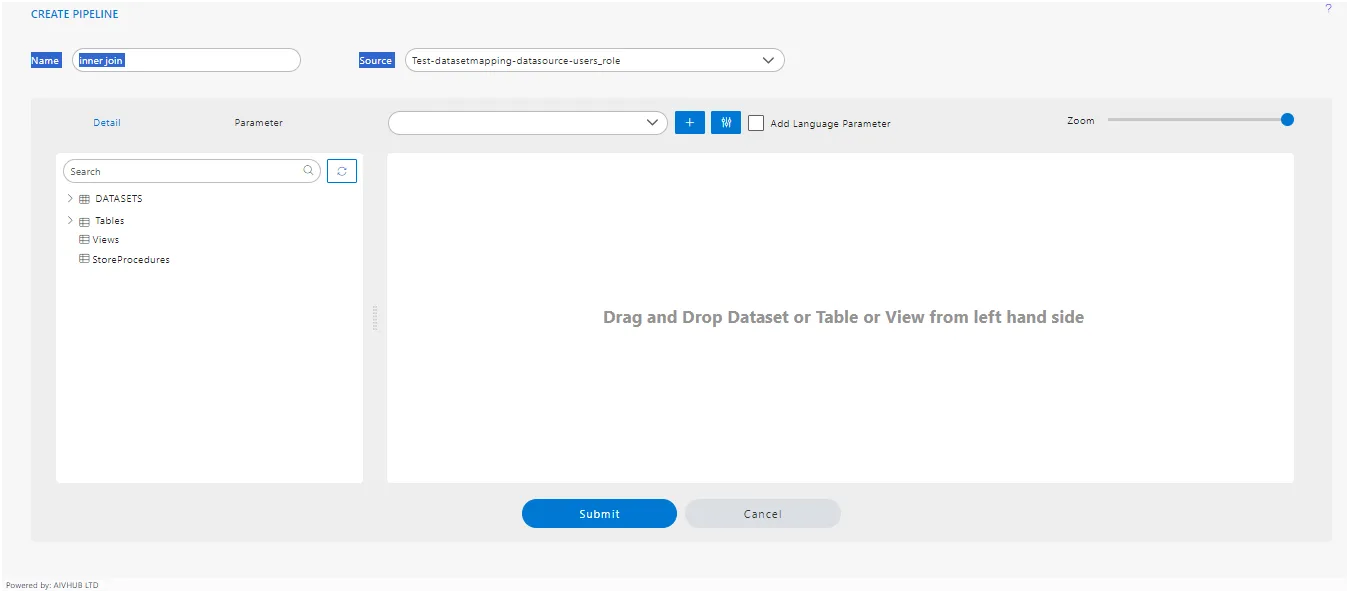
Drag and drop the “offices” from the list of tables,datasets to the diagram box on the right side, then select all the columns of the “offices”, as shown in the figure below.
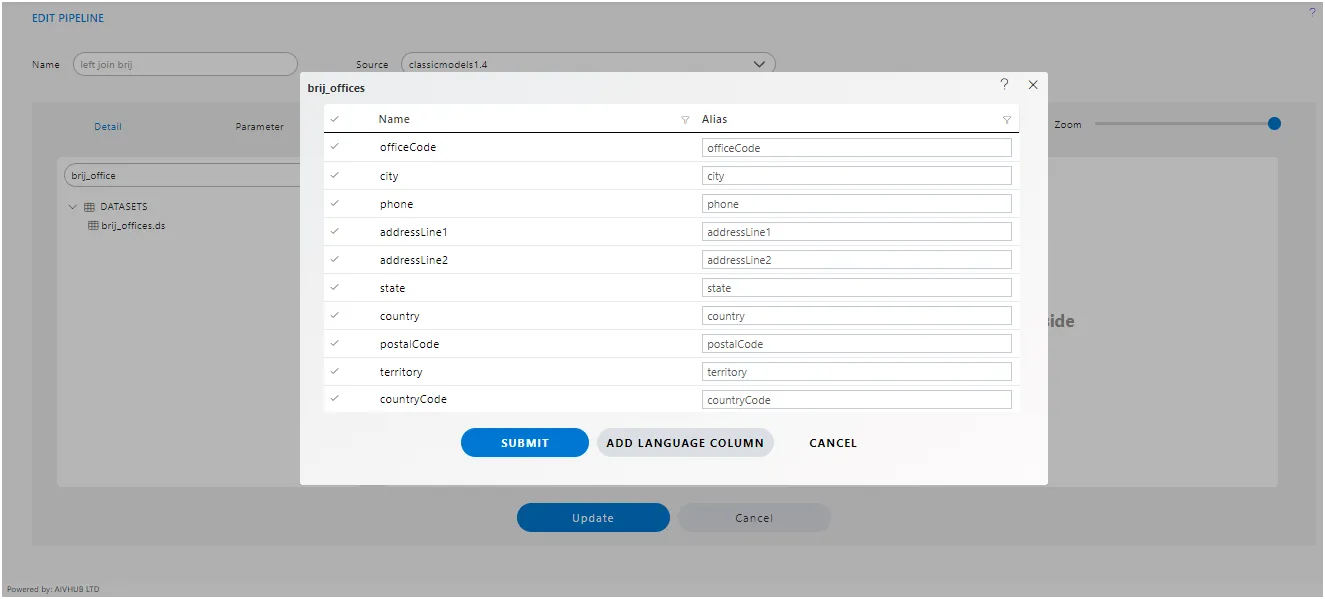
After clicking the submit button, the diagram box will resemble the figure below.
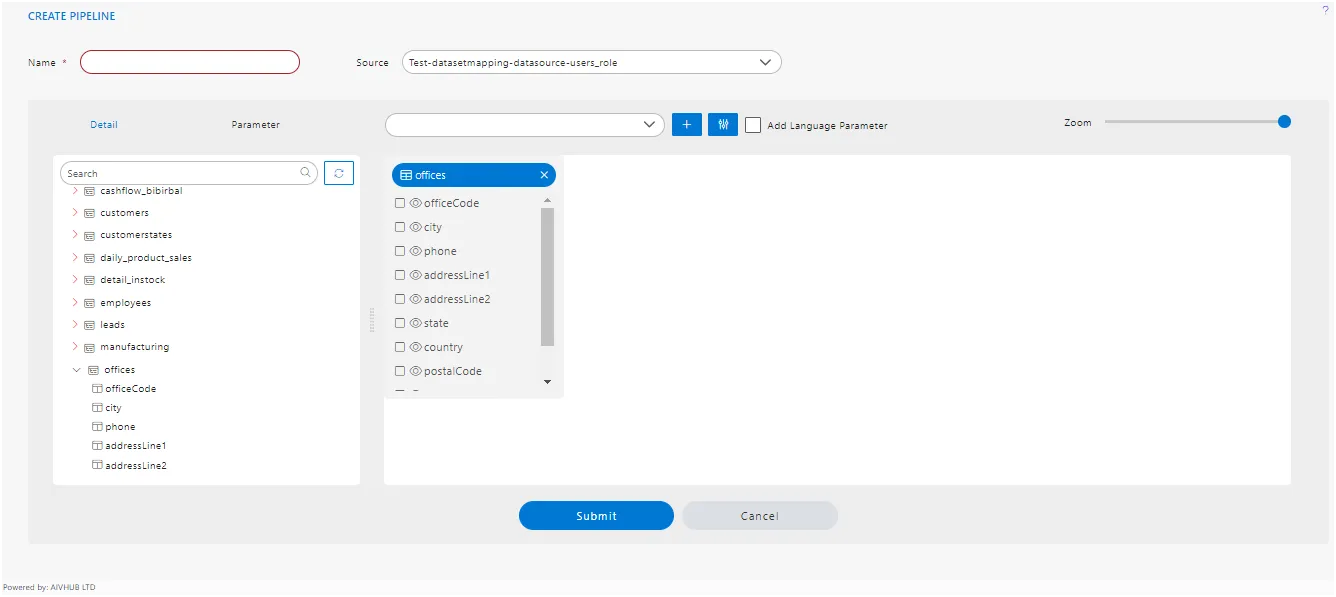
Drag and drop the customers from the left table menu to the right diagram box.
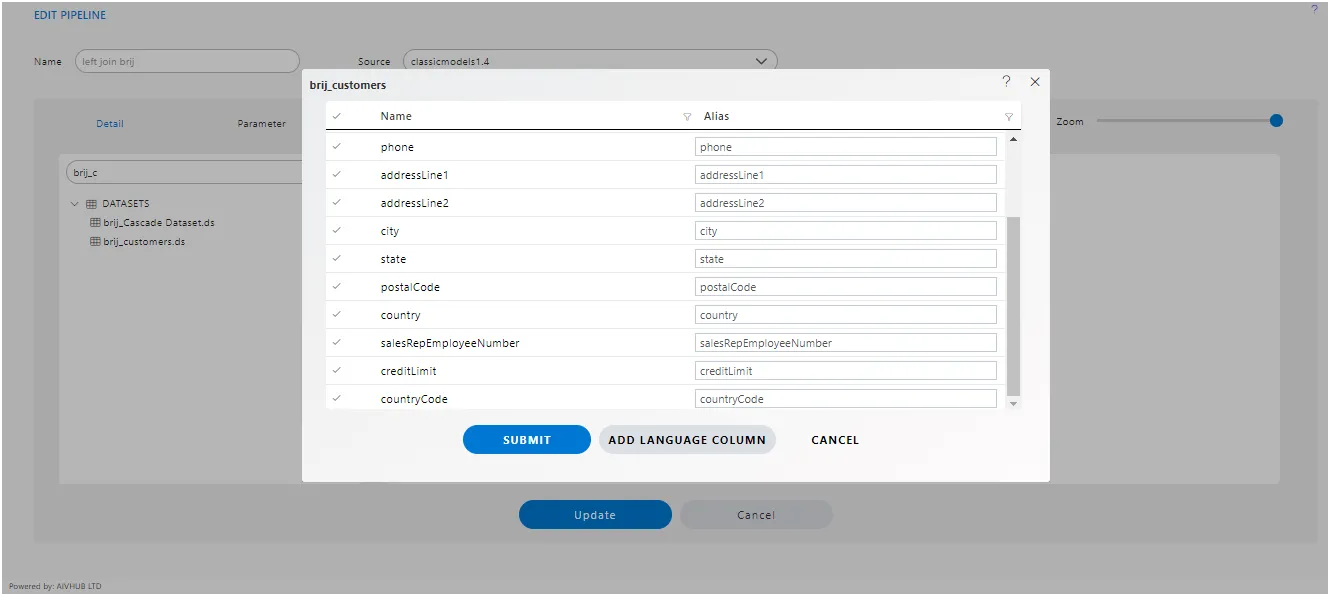
Select all the columns from the Customers table, and click submit button.
After adding offices and customers from the table and datasets list, Drag the country column from offices to customers, as shown in the figure below.

Click on the join between the two tables to add Pipeline configuration.
The Pipeline configuration control box will open. Select the Inner Join radio button and click on the Submit button, as shown in the figure below.
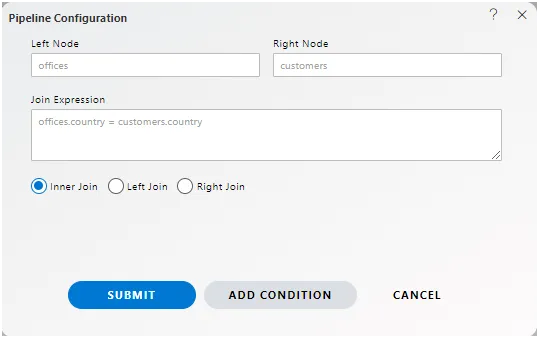
Click on Submit button. The Connection between the two tables will look as shown in the figure below.
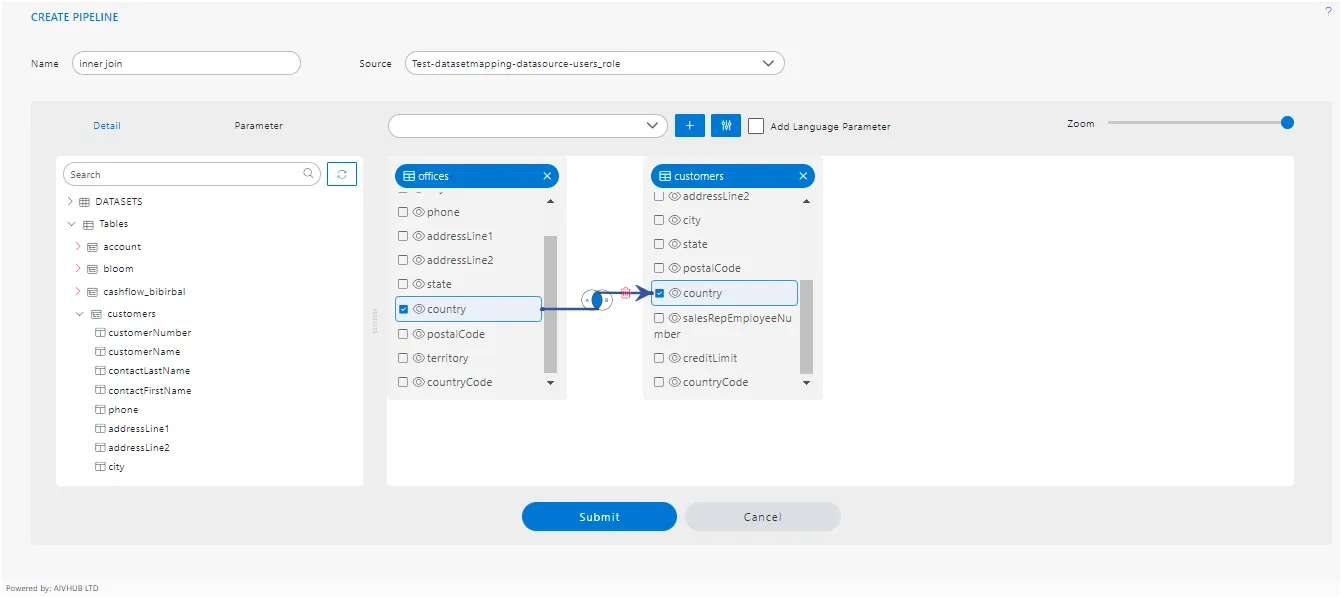
Click on Submit to save the Pipeline.
Go to Documents > Adhoc Analysis section from the Hamburger menu. In Adhoc Analysis, click on the + icon to create a new Analysis, as shown in the figure below.
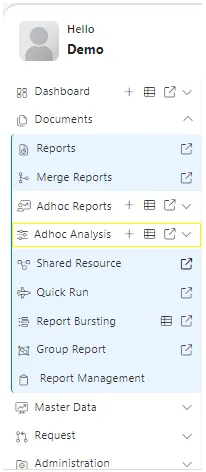
When you click on create Analysis then the Analysis Selection dialog box will open, as shown in the figure below.
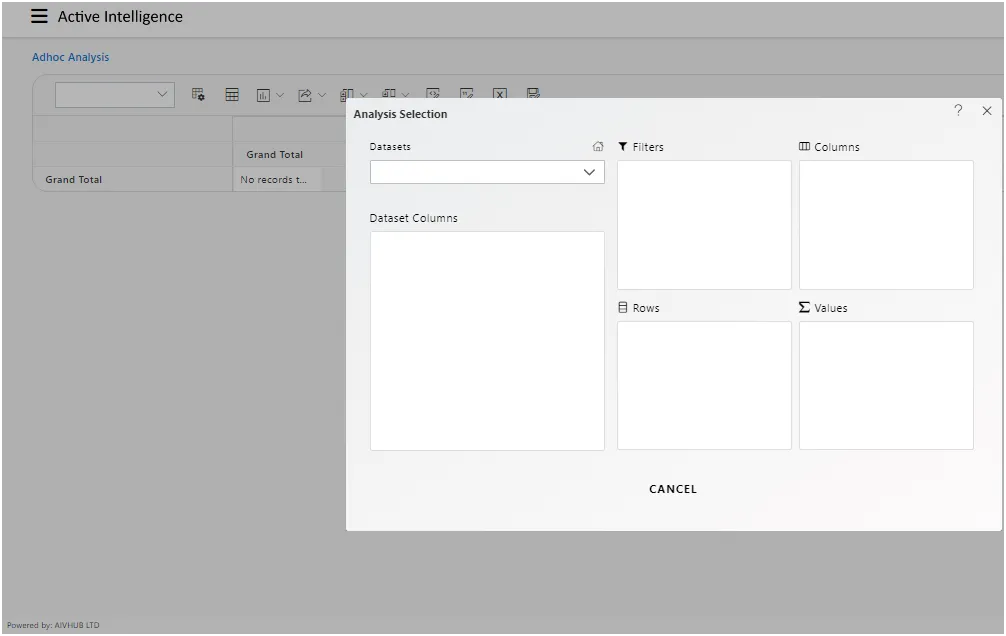
Enter the following details in Analysis Section.
Dataset: inner join brij.ds (select the Pipeline, which you are created)
The two tables will get load the left side box of Pipeline view, Now expends the OFFICES table.
Drag and drop a COUNTRY column from OFFICES to Rows, Drag and drop the Territory column from OFFICE and put it in the Column box, and drag and drop the Credit Limit column from Customers to Values box (Select sum in Type), as shown in the figure below.
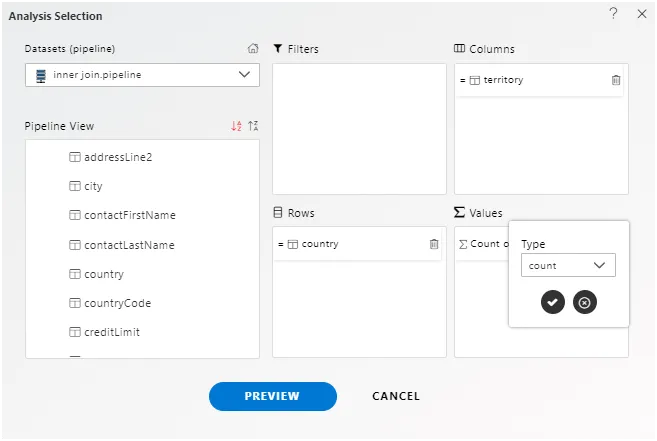
Click on Preview Button it will show the output and after the preview click on Cancel Button it will show the screen as follows:

Click on Save as icon for saving the Analysis, it will show the screen as below.Give the name of Analysis.
![]()
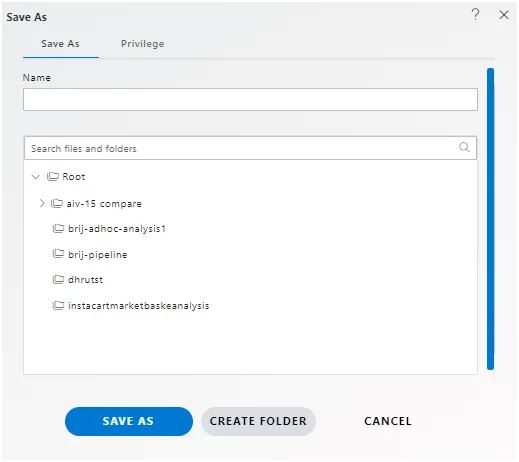
More features of AIV are as follows :
More features of AIV are as follows:
Pipeline Left Join
Pipeline Right Join
Pipeline Language Parameter